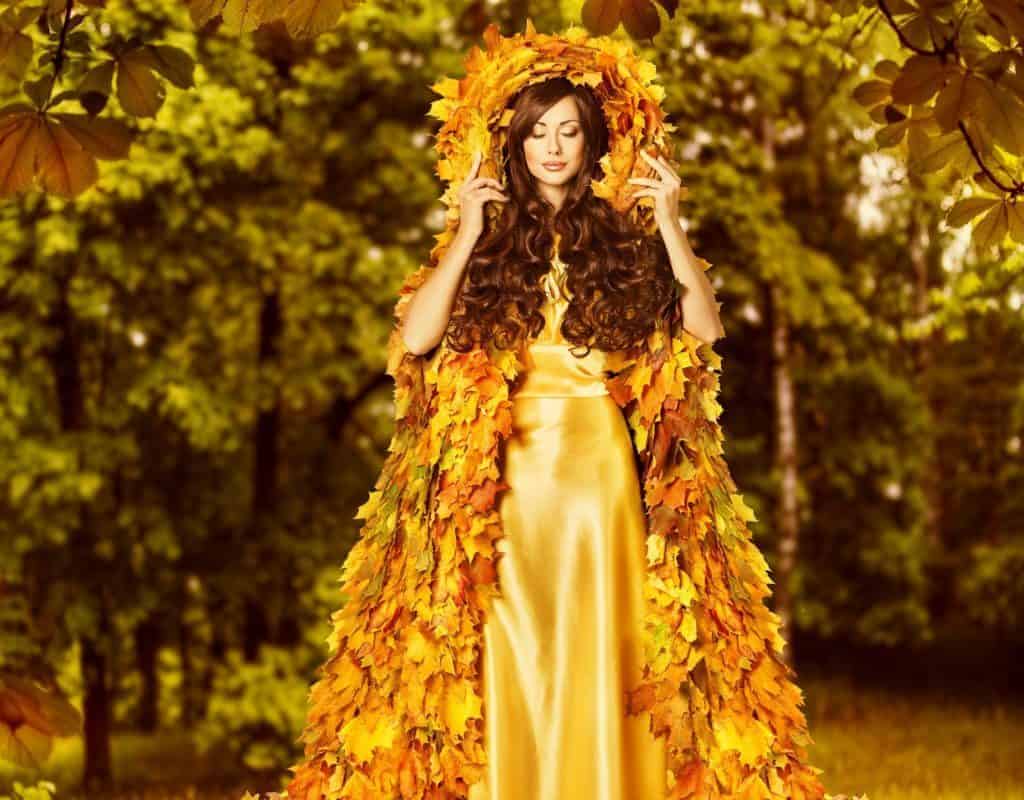Mabon is not merely a shift in the season but a window into the collective soul of yesteryears. From ancient Druid customs to Greek mythologies, the celebration intertwines us with the universe’s unending cadence. Tales of deities, rituals, and symbols encourage us to ponder our existence and our role in this ceaseless cycle of birth, growth, and renewal.
The Profound Essence of the Mabon Festival
The Cornucopia and the Green Man: Symbols and Rites of the Autumn Equinox
The autumn equinox heralds the time for the Mabon festival. In the northern hemisphere, it’s observed on September 21st, while in the southern hemisphere, it’s marked on March 22nd.
Astrologically speaking, day and night are of equal length on this day, as the Sun enters the zodiac sign of Libra. This occurrence is also known by names like the Harvest and the Avalon Festival. The quintessential emblem of Mabon is the cornucopia, often termed the “horn of plenty.”
The Mabon Festival rejoices in the second harvest. The term “Mabon” hails from Welsh, referring to the “Good Son.” Mabon represents a Welsh deity, embodying the male facet of fertility.
It’s seen as paramount to express gratitude to the God and Goddess for their myriad blessings and the bounties life has bestowed. During this festivity, there’s a keen emphasis on establishing a spiritual bond and recognizing and cherishing life’s plentiful gifts.
The Druids of old christened this celebration Mea’n Fo’mhair or the second harvest. In ritualistic practices, they presented cider and wine to trees, paying tribute to the Forest God, epitomized by the Green Man.
This festival isn’t solely a gesture of thanksgiving for divine gifts. It also serves as a time of introspection about life’s journey and accomplishments. Mabon recognizes and glorifies Earth’s abundance and munificence. The grain gathering that commenced at Lughnasadh concludes with this secondary harvest.
Balance is also at the festival’s core. Energies of light and shadow find equilibrium. Following this equinox, darkness will reign until the winter solstice, termed Yule.
The Symbolism of the Horn of Plenty in the Mabon Festival
Mabon: Reflections on the Life Cycle and Autumnal Traditions
During Lughnasadh, the fertility deity reaches its zenith. However, as time progresses, it ages and wanes in strength, destined to see its decline culminate on November 1st with Samhain.
Mabon signifies a phase of contemplation on life’s cycle: birth, growth, maturity, and death. Contrary to other beliefs, time in pre-Christian culture does not have a starting point. It perpetually regenerates through cyclical patterns.
The Mabon celebration conveys a lesson: everything comes to an end, but each ending signals a new beginning.
Throughout Mabon, it is customary to partake in seasonal vegetables, grains, and fruits, particularly those corn-based. Traditions of this period encompass activities like grape gathering and pressing. Wreaths made of ivy and hazelnut are crafted, and herbs are harvested.
The “horn of plenty,” a testament to the prosperity of the harvest, stands as a central emblem of this celebration.
Mabon’s color palette spans autumnal hues: reds, oranges, golds, browns, and purples. These shades aim to align individuals with the day’s resonance.
Mabon: Among Corn Dollies and Autumnal Deities
The Grace of Mabon: Celebrating Blessings, Renewal, and Divine Gratitude
This celebration pays tribute to various deities:
– Demeter, Persephone, Hades.
– The Muses.
– Dionysus and Bacchus, tied to wine.
– Morgana, the serpent-like female figure.
– Thor, Mabon, Hermes, and Hotei.
Furthermore, it honors the Mother Goddess, who takes the shape of an Elder. Corn, representing the Sun God and abundance, is a recurrent theme.
A quaint tradition involves crafting corn dollies. Made by tying the husk of the cob, they symbolize the Mother Goddess and femininity. It’s advised to preserve them for a year and then burn them in the subsequent Mabon, inviting renewal and prosperity.
Summer has peaked, and the tree leaves begin to turn golden. Nature, in its glory, beckons us to a well-deserved rest before facing the chilling winter.
It’s a time for joy and introspection—a chance to contemplate life’s gifts and lessons learned along the way.
Prominent rituals center on gratitude, earth’s blessings, and protection. It’s also about letting go of the negative and introspecting to find what we long to change or enhance. A profound sense of divine gratitude prevails.
Modron and Mabon: Aligning with the Autumn Equinox and Persephone’s Tale
From Kore to Persephone: The Mythology of the Autumn Equinox
The autumn equinox is also termed Modron, denoting “Mother Earth.” Legend has it that Mabon, Modron’s son, is born on the equinox night and vanishes three days afterward.
The tale narrates that Kore, Modron’s daughter, disappears while picking flowers. This event evokes the anguish of the Greek goddess Demeter in her frantic search for her daughter. After an extended search, the sun god, Helios, unveils that Hades took Kore to the underworld.
From then on, Kore is known as Persephone. Due to her absence, Demeter, the agriculture goddess, induces drought and plant wilting. To remedy this, Zeus intervenes, brokering a deal between Demeter and Hades. Persephone splits her time between Earth and the underworld, signifying the changing seasons.
Persephone’s absence ushers in dark days, symbolizing winter. Yet, her return brings light and joy to the world.
Mabon’s commemoration aligns with Persephone’s descent to the underworld. The Greater Eleusinian Mysteries festivities occur at autumn’s onset.
Discover the latest on the Autumn Equinox, capturing the magic and essence of this season:





